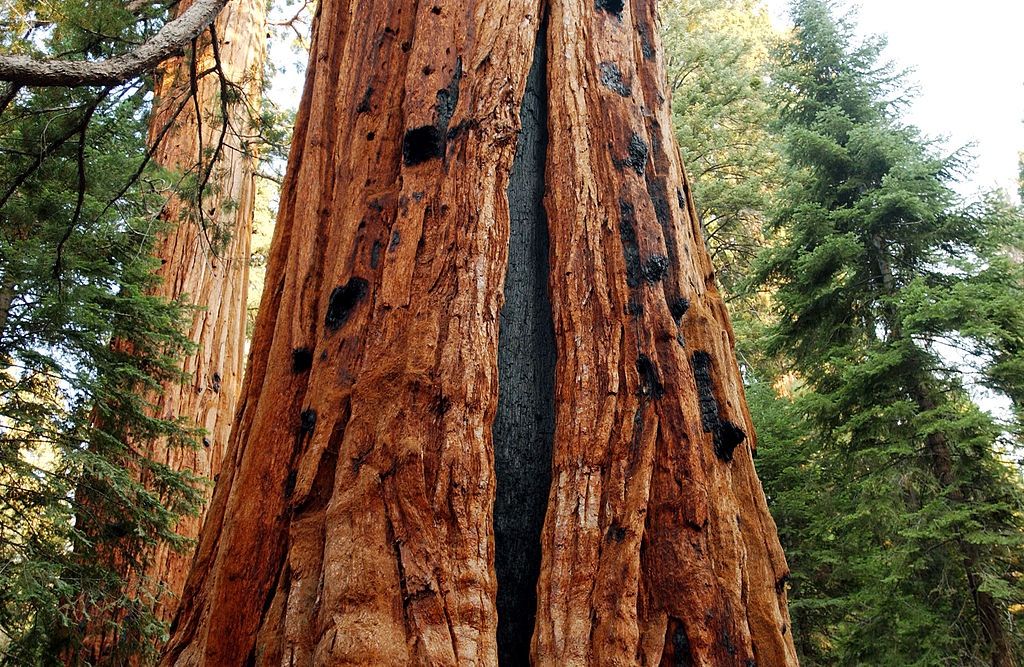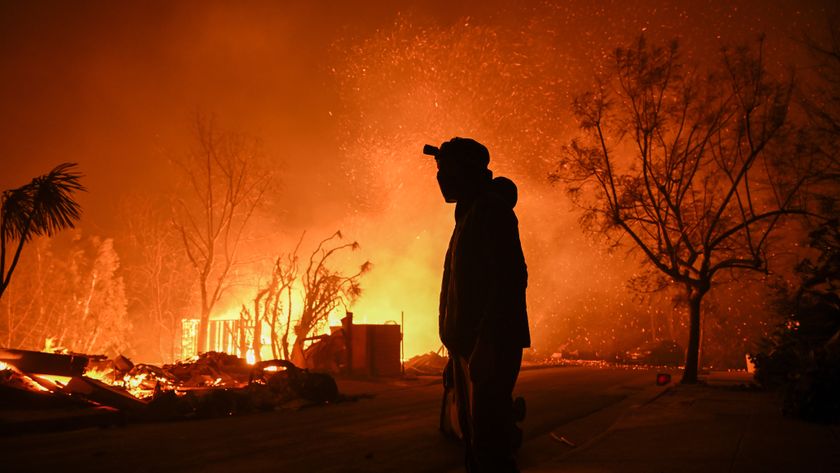Gobi Desert Dust Helps Sustain California's Sierra Nevada

After the conservationist John Muir devotedly hiked the Sierra Nevada mountain range in the late 19th century, he penned some of the greatest American nature writing ever put to paper and launched the Sierra Club, which remains one of the most influential members of the nation's conservation movement.
Thanks to his efforts and those of generations that followed, the wild beauty of Muir's beloved Sierra Nevada and its giant sequoias continues to thrive, albeit with a much greater amount of stress due to human-caused climate change. But new research suggests an unlikely ally in the preservation of Muir's iconic muse.
Credit, it seems, must be given to dust.
In a paper published today in the journal Nature Communications, a team of researchers found that dust provides a much greater amount of nutrients to vegetation in the Sierra Nevada than previously thought. The dust comes from as far away as the Gobi Desert in Central Asia and as nearby as California's Central Valley.
Phosphorus, along with nitrogen and carbon, is crucial to the survival of life on Earth. It is generally supplied to plants as bedrock is broken down into soil over the slow machinations of geologic time. Researchers have long considered the granite formations of the Sierra Nevada to be limited in phosphorus.
"In recent years it has been a bit of mystery how all these big trees have been sustained in this ecosystem without a lot of phosphorus in the bedrock," Emma Aronson, an assistant professor of plant pathology and microbiology at UC Riverside, said in a statement. "This work begins to unravel that mystery and show that dust may be shaping this iconic California ecosystem."
RELATED: Extreme Climate Change Millions of Years Ago Caused Mammals to Shrink
Sign up for the Live Science daily newsletter now
Get the world’s most fascinating discoveries delivered straight to your inbox.
Climate change is expected to increase the frequency and intensity of drought around the world, which will likely mean more dust moving around in the atmosphere. Understanding the role of dust migration in providing nutrients to plants will help researchers anticipate the effects of global warming.
The team, which included researchers from University of California campuses in Riverside and Merced, collected dust samples from four locations in the Sierra Nevada mountains, ranging in elevation from 1,300 to 8,800 feet.
Nicholas Dove, a UC Merced graduate student, was responsible for collecting the dust.
"Harvesting dust for scientific purposes is surprisingly rudimentary," he said in a statement. "We use many household supplies: Wooden posts hold up bundt pans filled with marbles, and the dust settles in the marble matrix. We collect this dust by 'washing' the marbles with sterile water. The water is filtered and, voila, you have your dust."
The pans were fixed atop 6-foot-high poles in order to avoid dust contamination from the researchers' boots.
The scientists identified the geographic origin of the dust samples by examining their isotopes.
They found that dust from Asia accounted for an average of 20 percent of the dust at the lowest elevation and 45 percent of the total amount at the highest elevation. The greater amount of Asian dust in the higher locations, the researchers said, is because dust travels high in the atmosphere and only falls to the ground when it comes into contact with an object such as a mountain.
Dust from the Central Valley was greater at lower elevations, which was expected. But the team found more Central Valley dust at higher elevations later in the dry season, which is significant because their study took place during the peak of what is likely the worst drought to hit California in a millennium.
"Considering we took our measurements in 2014, in the middle of the drought, this makes us think that the drought is a factor here," Aronson said.
Funding for the study was provided by the National Science Foundation (NSF).
"This research reveals that the transport of dust in the atmosphere is important for the ecological health of many parts of our planet," said Richard Yuretich, program director for the NSF's Critical Zone Observatory Network. "Complex cycles and feedbacks regulate conditions at the surface of the Earth. This study adds a significant piece to our knowledge of how the Earth works and what we can do to keep it functioning properly."
WATCH: Using Drones to Predict the Future of Climate Change
Originally published on Seeker.



